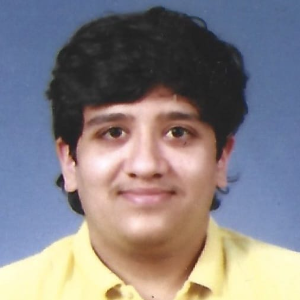Title : Assessment of risk factors, pattern and severity of CAD in semi-urban Indian women
Abstract:
Introduction: It is an alarming observation that one third of all women in their fourth decade will develop coronary artery disease(1). Moreover, young women who develop coronary artery disease have a higher morbidity and mortality as compared to men of same age. (1,2) Traditional risk factors play a role in women, but their impact on coronary artery disease differs due to interplay of sex related factors. Incidence of hypertension increases two to three times in women on oral contraceptives. Relative risk of coronary death from diabetes was 2.58 for women as compared to 1.85 for men (3),while dyslipidaemia common in women shows rise in premenopausal age (4) Hence data correlating risk factors in women with pattern & severity of “coronary artery disease” (CAD) will help to understand the disease better.
Aim: To assess risk factors, pattern and severity of CAD in Semi-Urban Indian women undergoing Coronary Angiography.
Objectives:
- To Observe the pattern and severity of CAD in women undergoing CAG.
- To Correlate CAD with risk factors like DM,HTN and dyslipidaemia.
Methods: Retrospective observational study was done on 77 women undergoing coronary angiography. After ethical clearance and permissions, case files were studied for history, presentation and laboratory parameters. Angiography reports were reviewed for pattern of CAD, extent of obstruction and vessel involved.
Results: Data of 77 women was recorded, and statistical analysis was done & results noted as follows
- Average age of women undergoing CAG was 61.8 years, BMI was 26.7. 88.3% women were postmenopausal.
- Out of the total cases, 73.07% had DM, 69.2% had HTN and 44.1 had dyslipidaemia. Dyslipidaemia was higher in older age group and showed statistically significant difference (p value=0.007).
- Single, Double, Triple vessel disease was seen in 37.6%, 42.9% & 20.8% patients respectively, Triple vessel disease being common in age group >55years. Commonly affected was left anterior descending (LAD)-77.9%, followed by left circumflex (LCX)- 44.2% and right coronary artery (RCA)- 59.7%.
- We studied association between CAD and risk factors-Diabetes Mellitus with LCX (p value =0.011 ), and RCA (p value =0.009), Hypertension with LAD (p value=0.019) and Dyslipidemia with LCX and RCA involvement (p value=0.000) with High Significance.
Conclusions:
Women with CAD showed high incidence of risk factors like DM, HTN and dyslipidemia. Triple vessel disease was common in older aged post-menopausal women. LAD was frequently involved in patients with HTN while LCX and RCA in Diabetes and dyslipidemia.
Audience Take Away
- This study will help the cardiologists and physicians to correlate Coronary Artery Disease with risk factors like Hypertension, Diabetes, and dyslipidemia
- It will help the cardiologists and physicians to suspect a particular vessel involvement if a particular risk factor is present
- Faculty members from public health department and professors from medical schools can use the knowledge obtained from the research to emphasize the importance of having a healthy lifestyle and identification of various risk factors and their role in severity of the disease



